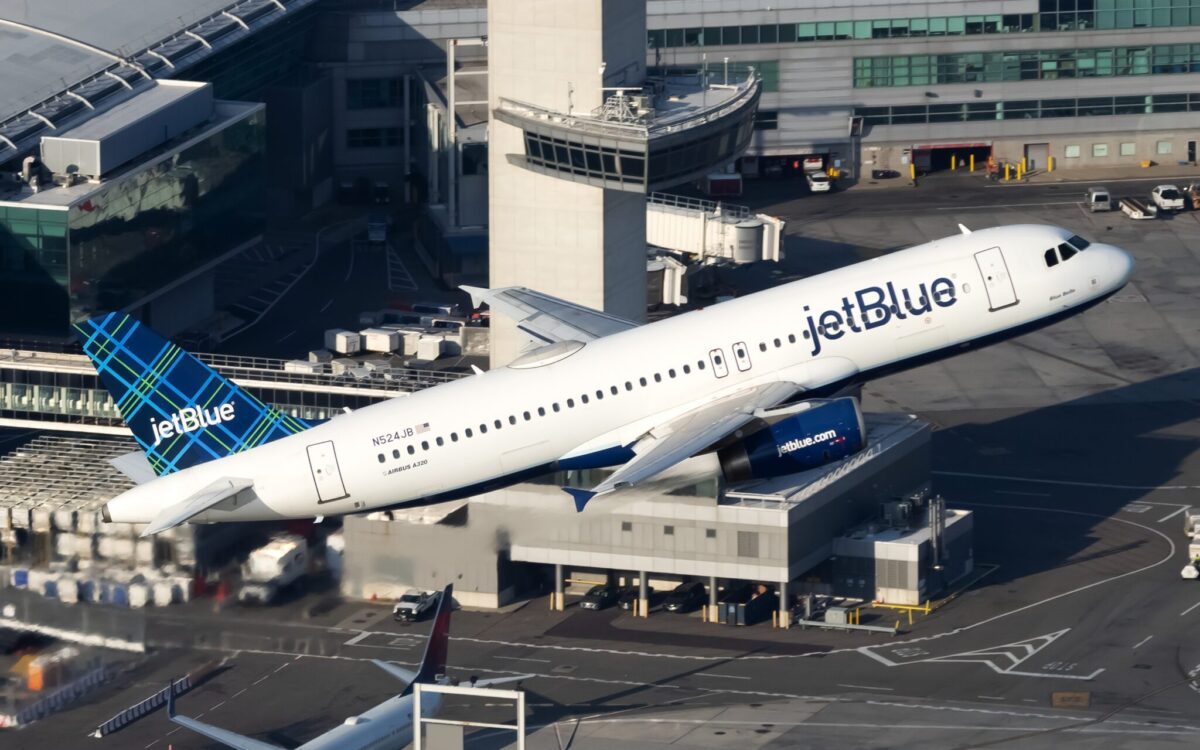Air China’s Ominous Fall
Skift Take
Editor’s Note: This story was first published in Skift Airline Weekly on August 13, 2018.
Among America’s Big Three airlines, there’s a clear profit champion. It’s Delta. Among Europe’s Big Three, there’s a clear profit champion: It’s IAG. And among China’s Big Three? The champion is no less clear: It’s Air China.
But Air China, more so than its champion counterparts abroad, has a lot to be nervous about. Problems, threats, and misfortunes are surfacing. Many are beyond its control. Some could prove highly damaging.
Two years ago, China’s flag-bearing carrier was flying high. With more than $2.5 billion in operating profits, its 2016 operating margin was 15 percent, double China Eastern’s figure and nearly double China Southern’s. Its Shenzhen Airlines subsidiary, based in the industrious Pearl River Delta region, itself earned a margin of nearly 16 percent. Like its peers, Air China enjoyed the windfall from collapsing energy prices that year, watching cheerfully as its fuel bill fell 9 percent despite 9 percent more seat capacity. China’s economy was still growing strongly. Chinese airline traffic was growing at a double-digit clip (it still is). And all major Chinese carriers were moving toward adoption of industry-best practices in areas like operations, marketing, revenue management, and distribution.
Chinese airlines were also benefiting from earlier rounds of consolidation, including Air China’s investment in Shenzhen Airlines but also China Eastern’s takeover of Shanghai Airlines and China Southern’s effective takeover of Xiamen Airlines. Lax antitrust enforcement probably helped inflate revenues too.
But Air China was better positioned than either China Eastern or China Southern, most importantly because its competitive challenges were less severe. As early as 2010, Beijing Capital Airport had surpassed London Heathrow to become the world’s second busiest airport after Atlanta. That year, Beijing’s traffic grew 13 percent. But this would be its last double-digit growth year, most importantly because of space constraints—the airport’s capacity was essentially maxed out. And like British Airways at congested Heathrow, Air China relished the upward momentum on airfares, more so than it despaired the limitations on its own expansion.
China Eastern, meanwhile, for all the benefits of its Shanghai Airlines takeover, faced two fast-growing private-carriers in its Shanghai home market: the LCC Spring Airlines and the business travel-oriented Juneyao. As for China Southern, its LCC exposure came early and heavy, at first from ASEAN-based carriers like AirAsia, and later from Juneyao’s LCC 9 Air. Its home city Guangzhou, in any case, was a much smaller market than either Beijing or Shanghai, and one with lots of competition from neighboring airports like Shenzhen and Hong Kong.
China Eastern and China Southern do have large operations in the capital. So does Hainan Airlines. But all have flight schedules and even terminal amenities far inferior to what Air China offers, particularly to business and government travelers. China Eastern even has a low-cost subsidiary in Beijing called China United, but its footprint at the tiny alternative Nanyuan airport is limited. At the same time, Air China was thriving in Chengdu, a rapidly-growing city in China’s interior with substantial business traffic.
Air China led the way on international alliances, developing joint ventures with Lufthansa, Air New Zealand and Air Canada, a close partnership with United and cross-ownership stakes with Cathay Pacific. Air China today has more than 50 million members in its Phoenix Miles loyalty plan—Lufthansa’s plan, by contrast, has something like 30 million. Air China is renewing its fleet with MAXs, NEOs, Dreamliners and—as of last week—A350s. It’s generating more premium traffic, more sixth-freedom traffic, more cargo traffic and more ancillary revenues.
So what’s the problem?
Ominously, Air China’s operating margin tumbled more than six percentage points in 2017, a significantly steeper decline that what its two major rivals experienced. All carriers felt a sharp rise in fuel costs, unprotected by hedges. But Air China was more exposed to international routes, where yield pressures were greatest. Air China’s yields on flights abroad dropped 5 percent year-over-year, while domestic yields rose 2 percent. That’s a reversal of the predominant trend in prior years, when domestic routes were more troubled, losing traffic to high-speed rail. The threat from trains has since stabilized, replaced by overcapacity strains on long-haul routes, most importantly to North America, where Air China has more capacity than any other airline.
SIGN UP NOW TO SUBSCRIBE TO SKIFT AIRLINE WEEKLY
Another reason Air China stumbled more than its rivals last year: its 30 percent ownership stake in Cathay Pacific, which posted a $200 million operating loss for 2017. Cathay’s troubles, in other words, are Air China’s problems too. The Hong Kong airline itself owns an 18 percent stake in Air China and suffered mightily from overcapacity throughout its core markets. Making matters worse for Cathay and by extension Air China: huge fuel hedge losses.
The Cathay situation is improving somewhat, as the airline demonstrated in its latest earnings review (see page three). But other problems are getting worse. For all of Air China’s troubles in 2017, it at least benefited from a rising yuan-dollar exchange rate as the year progressed. This trend continued well into 2018 but began reversing in April, with the yuan quickly losing all its gains from the past year. That’s adding cost pressures to all Chinese airlines, not just because they pay for fuel in U.S. dollars but also because they’re buying so many airplanes (from both Boeing and Airbus) in U.S. dollars.
The yuan is weakening as an escalating trade war with the U.S. begins narrowing China’s trade surplus and likely slowing its economy. In the second quarter, China showed its slowest GDP growth since 2016—some say the actual numbers are even worse than the official numbers. The country also has the world’s worst-performing major stock market this year. And government efforts to reduce extremely high levels of debt make corporate loan defaults more likely and new borrowing for consumption and investment less likely. Troubles at the heavily-indebted HNA Group, which owns Hainan Airlines, are one manifestation of these weakening conditions.
Will there be a Chinese economic crisis? Nobody knows. But airlines like Air China are clearly feeling some degree of slowdown.
Yet Chinese airlines continue to add more and more capacity. In June, Hainan Airlines—never mind its parent’s problems—grew ASKs another 19 percent year-over-year in the first half of 2018, and 25 percent internationally. Air China itself grew H1 ASKs 13 percent, and 17 percent internationally. In the current quarter, industrywide ASKs from mainland Chinese airports are up 10 percent both domestically and internationally, according to Diio Mi schedule data. Within China, although Air China and its largest rivals have eased expansion, smaller players maintain their double-digit growth—Chongqing Air, Zhejiang Loong and 9 Air are examples.
To these irritants add Rolls-Royce engine disruptions on Air China’s B787s—that’s ostensibly the reason it’s exiting the Beijing-San Jose/Silicon Valley market. Pilot shortages are another concern. Busy routes to Hong Kong, Taiwan, Japan, Korea and the ASEAN region have all been affected in the past few years by political tensions. Airspace congestion continues to cause maddening operational delays. And the U.S. trade war threatens to sour Air China’s currently-booming cargo business, not to mention Cathay Pacific’s.
That’s still not what worries Air China most. Even if trade tensions ease and the Chinese economy flourishes, there’s another looming threat. A big threat. Beijing next fall will open a giant new airport, radically altering the competitive dynamics of the market. China Eastern, teaming with international pals like Delta and Air France/KLM, has every intention of becoming a Beijing powerhouse—maybe not No. 1 in the city, but challenging Air China just as Air China challenges China Eastern in Shanghai. China Southern, currently the No. 2 airline at the current Beijing airport, holds ambitions no less grand for the new airport. There, it will team with its new partner American, and perhaps IAG and other Oneworld members too—it’s currently a SkyTeam member and an Air France-KLM joint venture partner, just like China Eastern.
Air China will remain at the current airport, where slots will suddenly become readily available for low-cost carriers, foreign carriers and anyone else ready to attack. Although unlikely in the near-term, an eventual China-U.S. open skies agreement could unleash another wave of competition in one of Air China’s most important markets, although it could at least lead to consolidation too, if Chinese and U.S. airlines form JVs. Either way, yields in Beijing are almost certainly poised to decline as soon as the new airport opens.
Air China, of course, will gain the opportunity to amplify its own expansion from Beijing. And as rivals migrate to the new airport, it can more closely coordinate operations with Star Alliance partners. The new airport, importantly, will be farther from Beijing’s city center and thus less convenient for many business travelers—Beijing Capital, in other words, will in that regard remain Beijing’s Heathrow in the eyes of high-value customers. If HNA’s troubles cause Hainan Airlines to downsize in a big way, that implies a big tailwind for Air China in Beijing and elsewhere.
So no, Air China’s business won’t suddenly crumble. But will it retain its status as the undisputed profit champion among China’s Big Three—and as one of the more successful legacy airlines in the world? Doing so is about to become much more difficult.
SIGN UP NOW TO SUBSCRIBE TO SKIFT AIRLINE WEEKLY





